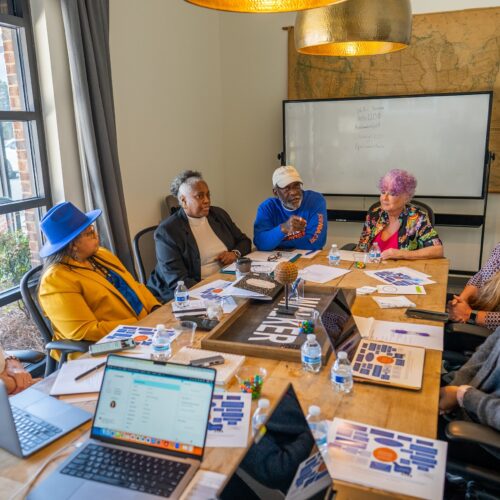
Iowa Forges Path for States Seeking to Understand and Improve Victim Restitution
Iowa, like many states, faces various challenges related to ordering, collecting, and disbursing victim restitution, particularly concerning victim engagement and program accessibility. To address these issues, the state has taken steps over the past six years to improve restitution processes and outcomes for victims. These steps may provide a template for other states seeking to do the same.
Iowa’s Work to Improve Victim Restitution
In 2017, the Crime Victim Assistance Division (CVAD) of the Iowa Attorney General’s Office partnered with The Council of State Governments (CSG) Justice Center to identify challenges and barriers for victims seeking restitution. The goal of the project was to map Iowa’s restitution system, analyze restitution data, and identify specific restitution collection challenges to improve.
As a follow-up to this initial data analysis and mapping, a more comprehensive restitution needs assessment was completed in 2018, and a final report was released in early 2019. This report included recommendations for improved policies and practices related to restitution, including victim notification, statewide tracking, sanctions for unpaid restitution, and priority of victim restitution over other court-ordered legal financial obligations. Overall, the report aimed to increase the impact of CVAD’s efforts to effectively impose and collect victim restitution across the state while improving outreach and accessibility to programming for crime victims.
Actions Iowa Is Taking
In 2021, Iowa has taken steps to prioritize and implement several recommendations from its partnership with the CSG Justice Center. The state is targeting two primary areas for improvement: (1) practical resources to help criminal justice stakeholders with the day-to-day management of restitution and (2) greater understanding of the financial needs of victims in Iowa. In striving to improve victim access to restitution, the state is seeking to help victim-witness coordinators, county attorneys, victim advocates, and county clerks improve their agencies’ restitution practices. If each of these actors can do just one thing better and more consistently for their restitution program, it will improve the collection of restitution statewide and ultimately increase the number of payments that go directly to victims.
Recommendations from the 2019 final report and Iowa’s corresponding action steps are as follows:
- Recommendation: Improve victims’ knowledge of their right to restitution by analyzing the factors that impact how victims are informed of their rights.Action: CVAD is conducting an analysis of the rates of return of victim registration packets in five counties to understand how victims are informed about their right to restitution and identify ways to increase victims’ knowledge of their rights.
- Recommendation: Disseminate best practices on restitution to practitioners across the state.
Action: In partnership with the Administrative Office of the Courts and County Attorneys Association, CVAD is collecting information and resources for an Iowa Restitution Toolkit that will provide best practices and strategies to practitioners across the state. - Recommendation: Streamline policies for the collection and disbursement of restitution across multiple agencies.Action: CVAD, in partnership with the Iowa Department of Corrections, is creating standardized policies for the collection and disbursement of restitution payments for people who are incarcerated and people who are on community supervision.
A Path for Other States to Follow
States often do not have the ability or the resources to address every challenge related to victim restitution. However, as Iowa illustrates, states do have the ability to understand and focus on select areas for improvement to make meaningful changes in the lives of victims. Target areas for improvement may be based on various factors unique to each state, and states should also consider existing partnerships between state and local agencies. These partnerships, when codified, can institutionalize restitution conversations that outlive leadership and political changes. Each state should focus on continually prioritizing restitution to improve the processes related to it and, ultimately, victim outcomes.
These are some of the target areas states may focus on to improve victim restitution practices:
- Disseminate best practices to prosecution and victim-witness staff to ensure victims are clearly informed about the process of restitution and can access it. Disseminating this information can also help staff streamline registration processes, conduct appropriate follow-up, and utilize trauma-informed practices. This effort may include distributing tools to victims to help them understand their rights as well as the restitution process and how to successfully navigate it.
- Examine statewide systems that track court-ordered victim restitution. This can descriptively identify restitution gaps and needs to highlight real-time investments in systems that allow practitioners to monitor restitution orders, payments, and disbursements accurately across agency databases.
- Create incentives for people who owe victim restitution to develop payment plans and consistently make payments. Additionally, create a mechanism for supervision officers to monitor and enforce these payment plans.
- Clarify statutory language related to restitution and ensure that laws prioritize restitution payments to victims over fines, fees, and other legal financial obligations.
- Foster multi-agency collaboration across courts, corrections, and victim advocacy agencies on issues related to victim rights and victim restitution.
- Improve the likelihood that victims learn about restitution, which is often a constitutional right. Increase the readability of registration packets and other information that victims receive to guarantee that they are clearly informed of their rights and the process to receive restitution.
Photo Credit: Alexey Struyskiy via Shutterstock
About the author

A positive school experience, where a child feels secure, is essential for their well-being. However, for many children…
Read MoreWhen returning to their communities from criminal justice settings, people with behavioral health needs face barriers in accessing…
Read More Supporting Children of Incarcerated Parents: Reimagining School and Community Collaboration
Supporting Children of Incarcerated Parents: Reimagining School and Community Collaboration
A positive school experience, where a child feels secure, is essential for their well-being. However, for many children with incarcerated parents—one in 14 in the U.S.—school can feel far from safe due to stigma, trauma, and a lack of understanding.
Read More Assigned to the Cloud Crew: The National Incarceration Association’s Hybrid Case Management for People with Behavioral Health Needs
Assigned to the Cloud Crew: The National Incarceration Association’s Hybrid Case Management for People with Behavioral Health Needs
When returning to their communities from criminal justice settings, people with behavioral health needs face barriers in accessing basic needs—including food, housing, employment, transportation, education, clothing, and substance use and mental health services—which increases their risk of experiencing a crisis.
Read More Meet the Medicaid and Corrections Policy Academy Mentor States
Meet the Medicaid and Corrections Policy Academy Mentor States
New Hampshire Department of Corrections Commissioner Helen Hanks presents at the Medicaid and Corrections Policy Academy in-person meeting.
Read More Taking the HEAT Out of Campus Crises: A Proactive Approach to College Safety
Taking the HEAT Out of Campus Crises: A Proactive Approach to College Safety
The sharp rise in school shootings over the past 25 years has led school officials across the U.S. to take a closer look at ways to keep students safe. For Chaffey College in Rancho Cucamonga, California, a tragic incident at a nearby university hit close to home and spurred campus leaders to revisit their own school’s threat assessments and crisis responses.
Read More New Smart Supervision Resident Analyst Program to Increase Supervision Agencies’ Data Analysis Capacity
New Smart Supervision Resident Analyst Program to Increase Supervision Agencies’ Data Analysis Capacity
Ideally, leaders would have actionable data readily available to them when they need it most. However, many agencies encounter significant challenges related to procuring accurate, consistent, and timely data, often grappling with outdated systems and inadequate tools.
Read More










